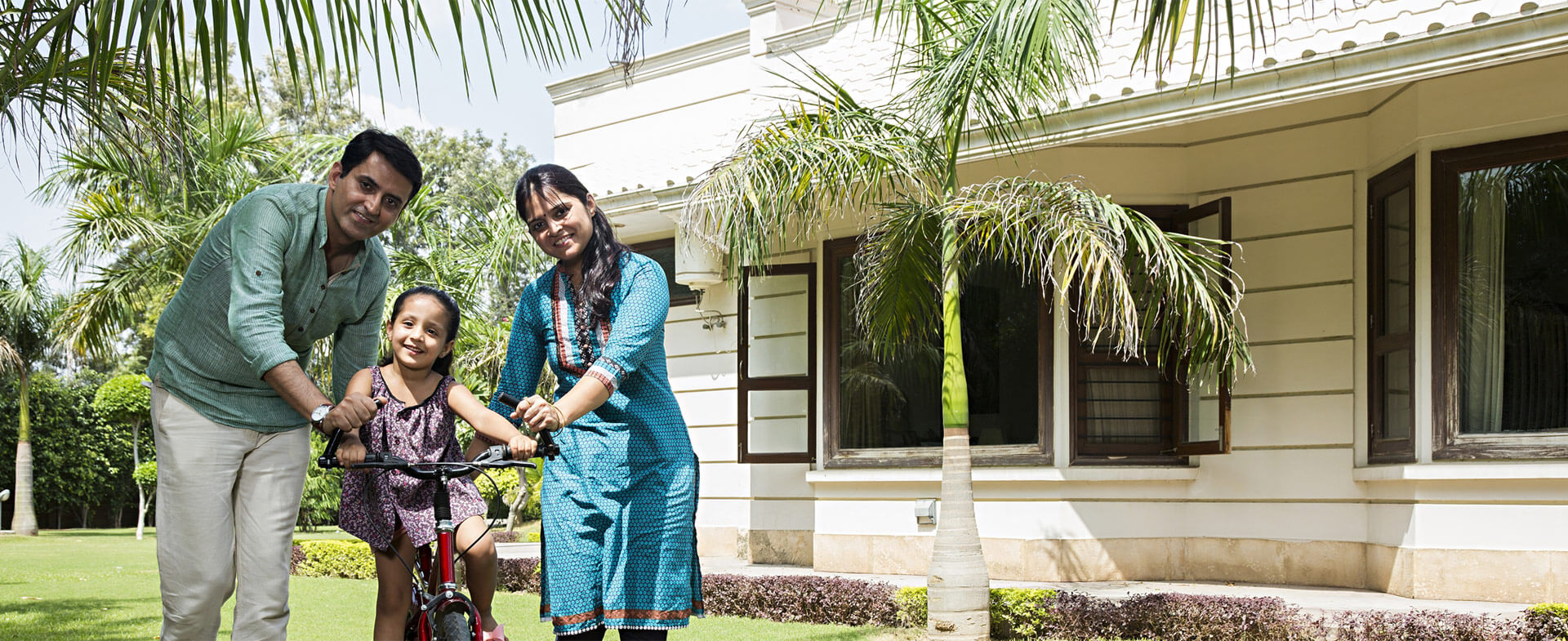
Your dream home should last for generations
use the best quality Cement.
Succulents - The answer to Indian summers
Regardless of the spaces available inside and outside our residences, there is one challenge that everyone must overcome this coming summer, i.e. the scarcity of water. This doesn’t mean that you cannot afford to have some beautiful green plants. The perfect answer to such a problem is to tend to succulents. The word "succulent" comes from the Latin word ‘sucus’, meaning juice, or sap. Succulents are plants that may store water in various structures, such as leaves and stems. Hence, they are less demanding in terms of care and more forgiving in terms of the water requirement as well.
A few things to note about these peculiar plants are that they grow to show off their decadent foliage and not necessarily to bloom flowers. This is not to state that there are absolutely no flowering succulents because there are, for example Kalanchoe luciae is one of them, but they should be appreciated for their foliage value predominantly. Succulents like to have well drained soil and hence require unglazed pots and wide containers with good draining holes. Avoid glass pots and containers as they tend to collect water and contain moisture and that discourages succulent growth.
Succulents need coarse sand and well-drained mineral soil which is porous. Readymade pot soil mix may be too rich in organic matter and contain wood material which isn’t apt for succulents. Their soil if well drained will encourage their growth; little else is needed to maintain a succulent making them perfect for beginners. There are many varieties of succulents but the ones below are easier in terms of their resistance to watering neglect and care.
Peperomia dolabriformis
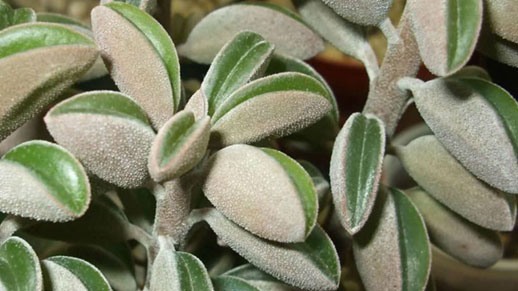
Peperomia also known as prayer pepper plant are not particularly hard plants to grow, they require steadily moist soil, but can be very sensitive to overwatering. They need good lighting and thrive in humidity, but if they have moist soil then watering should be controlled, as overwatering can cause the leaves to wiltfrom the bottom up. Peperomia like to be pot confined and do well within containers as well. They like loosely potted, well-drained soil.
Zamioculcas zamiifolia
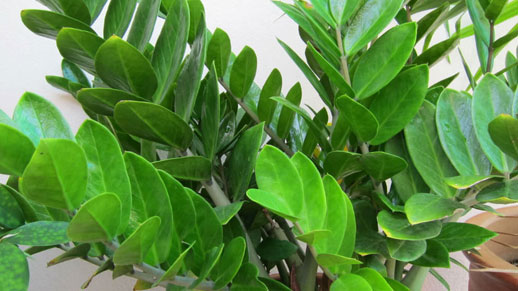
Known as the indestructible plant, it is an East African plant that grows up to 2 feet tall. The care of these plants starts with not caring. These plants thrive in low water condition with medium levels of water occasionally. They tend to survive months without water; but this may in turn stunt their growth. Watering once a week will speed up their growth, but not watering is not a problem with the Zamioculcas. Bright light is good but not essential for their growth although it’s best to avoid direct sunlight. With its glossy leaves and thick stalk, the look of the ZZ plant is immaculate considering its maintenance requirement.
Portulaca grandiflora
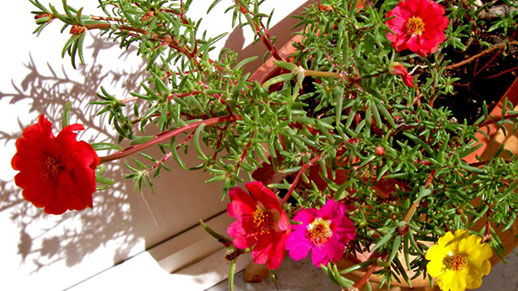
Portulaca grandiflora is a succulent flowering plant, they grow rapidly and can start flowering in less than 8 weeks. It has many common names, including ten o'clock and moss rose. Portulaca requires bright sunlight and does well when planted directly into the ground as well as containers; they tend to grow over the edge of planters and hanging pots making a grand display. These colorful plants will help attract butterflies to your space as well.
Euphorbia milii
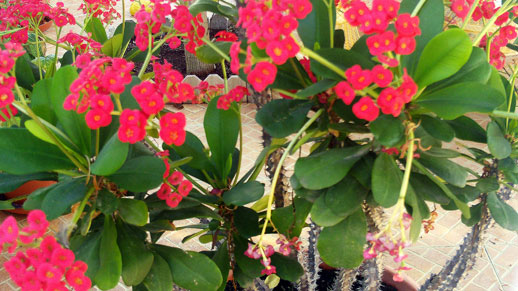
Euphorbia milii know as the crown of thorns or Christ plant originates from Madagascar. They have thorns all along the stem and have flower like blossoms on the tip of the stems making it look very eye catching. They tend to bloom all year long making it a sight to behold perennially. Euphorbias water demand is low, hence occasional watering is perfectly enough to sustain it. The plant tolerates trimming well and can basically be cut all year round, just be careful with its thorns which may be extremely sharp and poisonous in cases and so should be dealt with gloves. Some hybrid varieties found at your local nurseries may have less or no thorns with smaller more colorful blossoms.
Pedilanthus tithymaloides
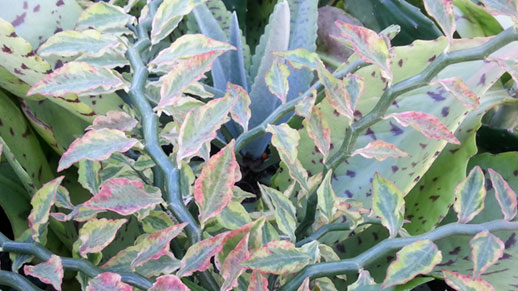
Pedilanthus tithymaloides known as the devils backbone is a common succulent from the Tropical Americas. The plant makes a good hedge plant, which can be trimmed. Devil's Backbone grows 2' to 4' tall and should be maintained with regular trimming. Pedilanthus is available in two varieties, green and variegated. They require bright sun and low to medium watering and well aerated soil. The drawback of this is when trimmed pedilanthus has the habit of oozing white sap like substance that may cause skin irritation if direct contact is made, hence gloves may be used whilst cutting.
There are many more succulents in the market that do well with low amounts of water and mediocre care. These plants will be a perfect starting plant investment in growing your garden this summer. Good soil, good drainage, scanty watering and moderate light equal happy plants.
Ar. Mrudula Reddy
Master of Landscape Architecture Back
Back